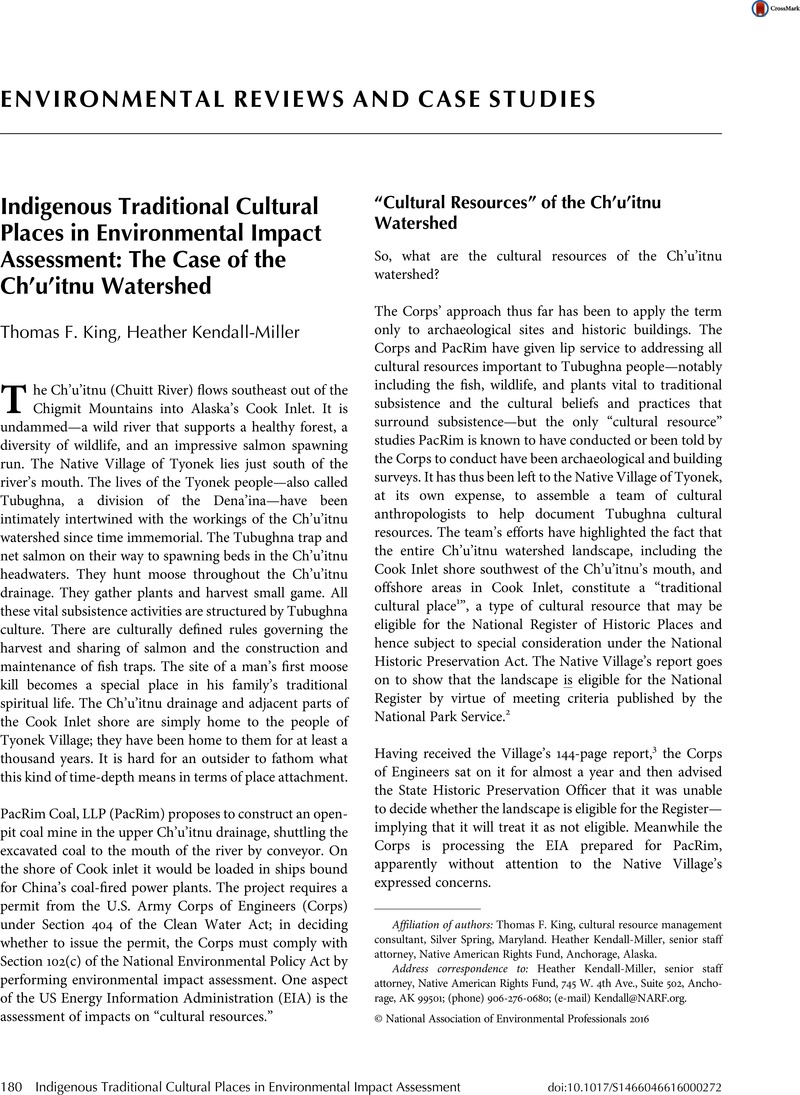Published online by Cambridge University Press: 25 July 2016

1 National Register Bulletin 38, cited below, calls such places “traditional cultural properties,” but some indigenous groups and others object to “property” as suggesting commodification, and contemporary usage favors “places.”
2 36 CFR § 60.4.
3 Boraas, A.S., R.T. Stanek, D.R. Reger, and T.F. King. 2015. The Ch’u’itnu Traditional Cultural Landscape: A District Eligible for the National Register of Historic Places. Native American Rights Fund for Native Village of Tyonek. Report submitted to the U.S. Army Corps of Engineers, the Alaska State Historic Preservation Officer, and others.
4 National Register of Historic Places. 1990. Guidelines for Evaluating and Documenting Traditional Cultural Properties, National Register Bulletin 38, National Park Service. Available at http://www.nps.gov/nr/publications/bulletins/nrb38/ (accessed January 24, 2016).
5 National Register of Historic Places Program. 1966. National Register Federal Program Regulations, 36 CFR 60.4. Available at http://www.nps.gov/nr/regulations.htm#604 (accessed January 16, 2016).
6 See 36 CFR 60.4(a).
7 The independent US government agency charged with overseeing federal agency compliance with Section 106 of the National Historic Preservation Act.
8 See 36 CFR 800.5.
9 Letter of April 3, 2015 to the U.S. Army Corps of Engineers.